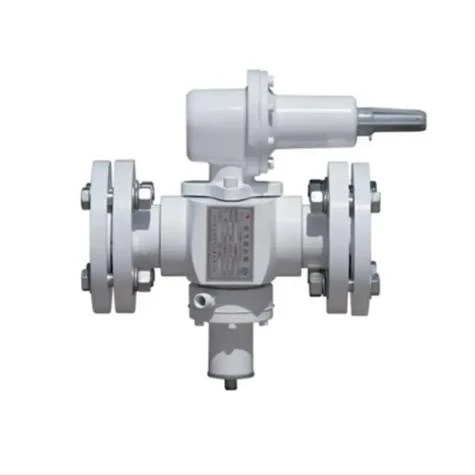
Dec . 06, 2024 08:25
Back to list
Natural Gas Supply and Distribution Facilities Overview and Importance in Energy Infrastructure
The Role of Natural Gas Distribution Stations in Energy Supply
Natural gas has emerged as a vital component of the energy landscape, playing a significant role in powering homes, industries, and transportation. Among the critical elements in this supply chain are natural gas distribution stations. These facilities serve as the backbone of natural gas delivery, ensuring that this cleaner-burning fossil fuel reaches consumers efficiently and safely.
Understanding Natural Gas Distribution Stations
Natural gas distribution stations are facilities that receive natural gas from transmission pipelines and prepare it for delivery to consumers. The gas is typically transported at high pressure through these transmission lines, and once it arrives at a distribution station, it undergoes several crucial processes. First, the gas is regulated to lower pressures suitable for distribution networks. This pressure reduction is essential to ensure safety and prevent damage to infrastructure.
In addition to pressure regulation, distribution stations are equipped with various systems to monitor and control the quality of the gas. This includes checking for impurities and ensuring that the gas meets the required specifications for safe consumption. Many distribution stations also incorporate odorization systems; a sulfur compound is added to natural gas to give it a distinctive smell, aiding in the detection of leaks and enhancing safety measures.
The Journey of Natural Gas
The journey of natural gas begins deep within the Earth, often extracted from underground reservoirs or shale formations. After extraction, the gas undergoes processing to remove impurities and ensure that it meets the standards for commercial distribution. This processed gas travels through a network of high-pressure transmission pipelines until it reaches distribution stations.
Once the gas arrives at a distribution station, it is then directed towards smaller pipelines known as distribution mains, which further subdivide the gas flow for local distribution. This intricate network of pipelines delivers natural gas to homes, businesses, and industrial facilities, making it an essential energy source across various sectors.
natural gas distribution station

The Importance of Safety and Technology
Safety is a paramount concern in the operation of natural gas distribution stations. These facilities are subject to stringent regulations and regular inspections to minimize risks associated with gas leaks or equipment failures. Advanced monitoring systems utilizing sensors and real-time data analytics help operators track the integrity of the infrastructure and respond swiftly to any anomalies.
Moreover, innovations in technology continue to enhance the efficiency and safety of natural gas distribution. For instance, automated pipeline monitoring systems can detect pressure fluctuations, potential leaks, and other critical factors that could affect the supply chain. Additionally, smart grid technology is being integrated into the distribution network, enabling better demand management and reducing the environmental footprint of gas distribution.
Environmental Considerations
Natural gas is often touted as a cleaner alternative to coal and oil, primarily due to its lower carbon emissions when burned. However, the environmental implications of natural gas distribution should not be overlooked. Methane, the primary component of natural gas, is a potent greenhouse gas, and its leakage during extraction, transportation, and distribution can significantly impact the climate.
To address these challenges, many distribution companies are investing in leak detection technologies and aiming for zero-emission goals. The implementation of rigorous maintenance protocols and the adoption of renewable energy sources within distribution systems are crucial steps toward minimizing the environmental impact of natural gas distribution.
Conclusion
Natural gas distribution stations are pivotal in ensuring that this essential energy resource is accessible to consumers. While they play a critical role in the energy supply chain, their operation comes with responsibilities, including safety, efficiency, and environmental stewardship. As the demand for cleaner energy continues to rise, the evolution of natural gas distribution technologies and practices will be instrumental in paving the way for a sustainable energy future. By focusing on innovation and safety, natural gas distribution stations can contribute to a balance between meeting energy needs and protecting the environment.
Latest news
-
Safety Valve Spring-Loaded Design Overpressure ProtectionNewsJul.25,2025
-
Precision Voltage Regulator AC5 Accuracy Grade PerformanceNewsJul.25,2025
-
Natural Gas Pressure Regulating Skid Industrial Pipeline ApplicationsNewsJul.25,2025
-
Natural Gas Filter Stainless Steel Mesh Element DesignNewsJul.25,2025
-
Gas Pressure Regulator Valve Direct-Acting Spring-Loaded DesignNewsJul.25,2025
-
Decompression Equipment Multi-Stage Heat Exchange System DesignNewsJul.25,2025

